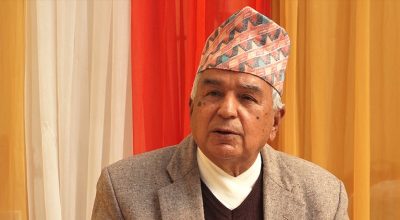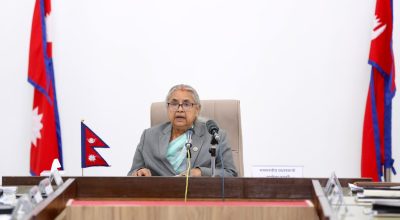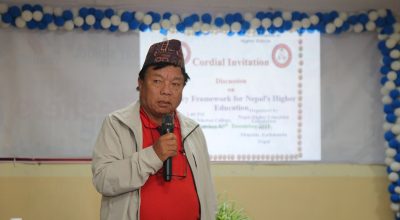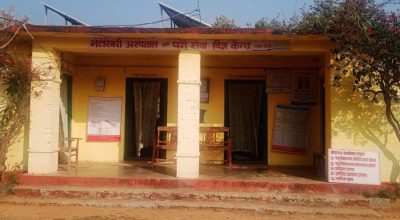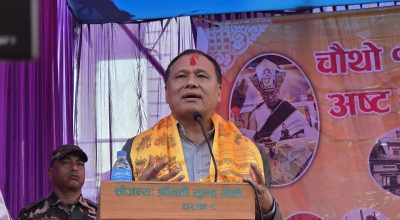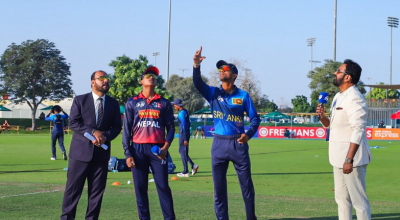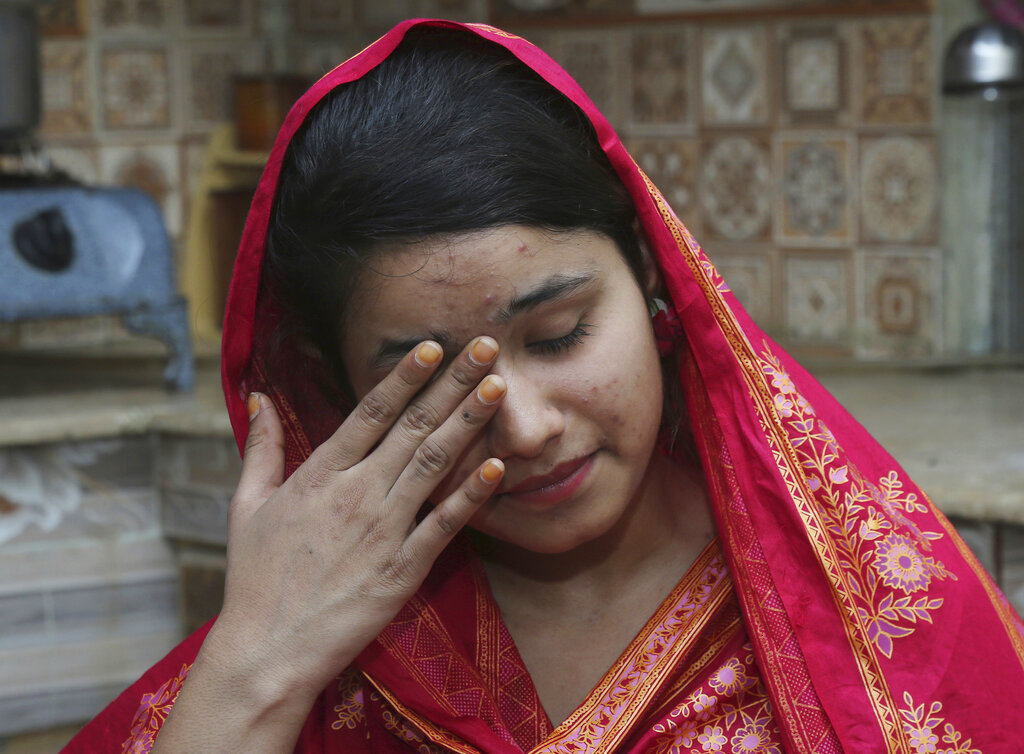
– Pabitra Guragain/RSS Nepal

Kathmandu, Dec 11, 2019 : The 16 Days of Activism against Gender-based Violence (GBV), an international campaign against violence against girls and women, concluded Tuesday.
The annual campaign globally kicks off on November 25, the International Day for the Elimination of Violence against Women and concludes on the Day of International Human Rights.
The theme for the 2019 campaign is “Orange the World: Generation Equality against the Rape.”
The theme itself suggests that it is high time to speak, act and stand against the longstanding rape culture, which is described as the worst form of violence against women and girls.
But, amidst the celebration of the Campaign, we continued to hear shocking and very disappointing news about the violence against women and girls across from the world.
In Hyderabad of India, the charred body of a vet who was allegedly killed after gang rape was found November 28. The BBC writes the 27-year-old vet disappeared in the evening a day before, after attending appointment with a doctor. Her badly burnt body was found the next morning.
Police allege she was gang-raped before she was killed. It may be noted that four suspects in the case were allegedly shot dead in the police encounter.
On December 7, the PTI India quoting police reported that a 17-year-old woman from Haryana, who had earlier this year alleged four men of her village in Palwal district of raping her, lodged a complaint that the four kidnapped and raped her again on December 4.
The Associated Press few days back released a report with the intro: “Page after page, the names stack up: 629 girls and women from across Pakistan who were sold as brides to Chinese men and taken to China.”
In Nepal, Achham, the district in Far-West Sate on December 2 reported the one more death related to the Chhaupadi (a cultural practice which banishes menstruating and new mothers from home at least first four or five days forcing them to stay in a poorly ventilated hut or a cowshed).
The victim is Parbati Budha Raut 21, of Sanfebagar municipality-3, police said. Menuka Dhungana in the Kantipur Daily recently writes that there are over 33,000 Chhaugoths in Achham followed by over 25,000 in Bajhang and 4,000 in Doti despite the criminalisation of Chhaupadi in 2017.
Similarly, few days back, the Sunsari police arrested self-proclaimed spiritual leader Krishna Das Giri, popularly known as the Sidhha Baba who is alleged of raping his female follower.
Before that on November 26, the Women’s Rehabilitation Centre (WOREC) published an annual publication ‘Anbeshi’ incorporating cases related to the Violence against Women recorded in Nepal last fiscal year (2075-76/2018-19).
Of 1,319 recorded cases, 66.72 percent (880) are about domestic violence of several forms, 11.98 percent (158) are about social violence and while 10.84 percent (143) are related to rape.
The National Women Commission (NWC) in the first four months of the current fiscal (2019-2020) which began on July 17 received 370 complaints of violence: 340 are about domestic violence took place within the private domain or the household and 40 about violence against women occurred in public domain such as in public transport, at workplace, and in digital life and so on.
NWC Spokesperson under-secretary Laxmi Pandeya (Gautam) specifies the complaint that was reported to the Commission few days back against a man alleged of cheating a woman (divorcee) of her Rs three million in the pretext of ‘live-in’ relation.
Being based upon the ‘live-in’ related cases reported to the NWC, we can say women are more vulnerable to be subjugated to emotional, physically and economic violence in this relation, she says, adding the NWC has ensured 24-hour free hotline service Khabar Garaun 1145 to receive complaints of gender-based violence.
These all incidences are forms of GBV. What is GBV Prof Dr Mira Mishra defines, “Gender based violence is the direct outcome of unequal and exploitative power relationship between men and women. In societies where men are more powerful structurally, women are subjected to violence more than men.”
She argues a democratic society should not accept violence against women, men and sexual minorities as it weakens the core of democracy.
Senior journalist Babita Basnet takes it as a global phenomenon as it happening everywhere in every human society. According to her, girls or boys and men or women and those who belong to gender and sexual minority group could be its victim, but scenario is that women and girls make up the majority of survivors so far and they are a more vulnerable group.
So the Campaign is focused on advocating for the elimination of violence against girls and women. As she says mental violence depends upon the ‘level of understanding’.
“The thing which our mothers had accepted as normal might be of our concern; and unacceptable for the future generation,” she gives the example to justify this view.
Her simple understanding about sexual violence is that our way of seeking fun, entertainment and pleasure must not hurt and harm others.
GESI expert and academician Rammaya Lamichhane is of the opinion that women and girls are the most affected group in the GBV list because it is an outcome of a hierarchal power relation which is male -centered and as a result, property, power, and society is largely controlled by male which ultimately provide a ground for such ‘privileged group’ to exploit, suppress, subordinate and dominate women.
“The GBV is manifested in several forms: rape, torture, domestic violence, killing, trafficking, discrimination, forced and early marriage, exclusion, sexual harassment, mobility control and so on.”
Journalist Prakash Astha believes that it is committed out of the mentality of being superior and powerful than others and is an attempt to establish the same (mis)belief. “More it is a learned activity,” he concluded.
Are GBV cases growing or getting more exposure? Journalist Basnet and government representatives Gautam and Karki all believe that GBV incidences were there in human history since the past.
These days more cases are coming out due to increasing culture of breaking the silence by survivors. Progressive laws against violence, rising level of awareness and confidence on women and girls, legal and other sorts of support survivors are getting from the government and non-government levels, and media support are among those factors promoting the culture of breaking the silence about violence against women and girls.
Subsequently, they say that new forms of violence against girls and women are being emerged with the use of technology and digital violence is one of its forms.
Ways of prevention Journalist Basent and academician Lamichhane echo the need of taking a zero-tolerance against the GBV with full enforcement of legal provisions against it, describing the Campaign as a tool of creating awareness against GBV and advocating for its elimination.
They see the need of taking corrective measures to remove the existing structural inequalities and promote gender parity.
The view of government representative Roshanidevi Karki, the government under secretary (Ministry of Women, Children, and Senior Citizen: The GBV Section) highlights the need of men’s alliance in efforts to end violence against girls and women.
“The equality generation is not achievable until we see men’s participation to fight violence against women and girls.”
(The writer is editor at National News Agency of Nepal)
—







